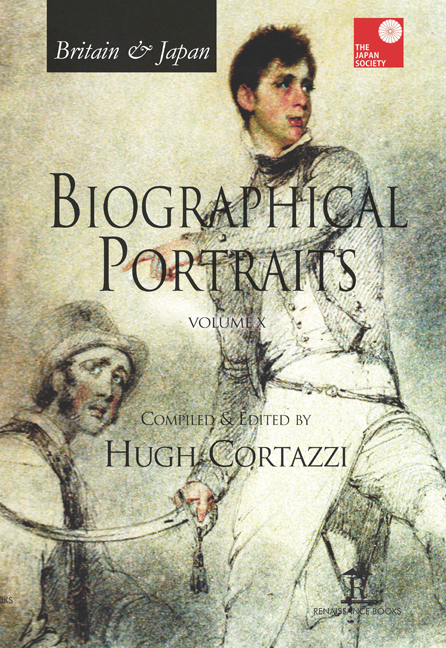Book contents
- Frontmatter
- Dedication
- Contents
- Introduction
- List of Contributors
- Index of Biographical Portraits in Japan Society Volumes
- PART I BRITAIN IN JAPAN
- PART II JAPAN IN BRITAIN
- Select Bibliography of Works in English on Anglo-Japanese Relations [Compiled by Gill Goddard – Retired East Asian Studies Librarian, University of Sheffield]
- Select Bibliography of Works in Japanese on Anglo-Japanese Relations [Compiled by Akira Hirano, SISJAC]
- Index
4 - Marianne North (1830–1890): Traveller, Botanist and Artist
Published online by Cambridge University Press: 07 May 2022
- Frontmatter
- Dedication
- Contents
- Introduction
- List of Contributors
- Index of Biographical Portraits in Japan Society Volumes
- PART I BRITAIN IN JAPAN
- PART II JAPAN IN BRITAIN
- Select Bibliography of Works in English on Anglo-Japanese Relations [Compiled by Gill Goddard – Retired East Asian Studies Librarian, University of Sheffield]
- Select Bibliography of Works in Japanese on Anglo-Japanese Relations [Compiled by Akira Hirano, SISJAC]
- Index
Summary
INTRODUCTION
MARIANNE NORTH was born on 24 October 1830 at Hastings in Sussex. Her father Frederic North was a landowner who came from a distinguished family. He had been elected Member of Parliament for Lewes in 1830. Her mother, who had been a young widow when she married Marianne's father, had a daughter named Janet from her previous marriage. Marianne had a younger sister Catherine and brother Charles.
Marianne had little formal education but she had a good voice and took singing lessons. In 1847 the family began a three-year European tour during which she studied flower painting, botany and music. Her mother died in 1855 and when her voice gave way she concentrated on flower painting. Her father rented a flat in Victoria Street from where she and her father often rode to Chiswick and Kew Gardens. There she met the great botanist Sir William Hooker who gave her a hanging branch of the Amherstia nobilis growing normally in tropical countries. This plant may have awoken her interest in the tropics with its exotic flowers and plants.
Every summer she and her sister accompanied her father on travels in Europe. She kept a diary and made sketches. During a visit to Spain she began to paint landscapes in watercolours.
After her father lost his seat in parliament in 1865 Marianne accompanied him on journeys further afield including to Egypt and Syria. She took up oil painting, which she preferred to watercolour. In 1869 her father to whom she had been devoted died. Painting helped her in her grief and in 1871 she sold her home in Hastings and devoted herself to travel in search of plants and flowers and to painting.
In 1871 and 1872 she travelled to Canada, the USA and Jamaica. She then spent eight months in Brazil. In 1875 she made plans to visit Japan where on a short visit in 1877 she suffered from rheumatic fever before returning to England via South East Asia. In Borneo she discovered the largest known carnivorous pitcher plant, which was the first of five plants named in her honour.
She later travelled extensively in India, preferring to go about alone. She was not put off by appalling travel conditions. She also toured Australia, New Zealand and Hawaii at the suggestion of Charles Darwin.
- Type
- Chapter
- Information
- Britain & Japan Biographical Portraits Vol X , pp. 45 - 57Publisher: Amsterdam University PressPrint publication year: 2016

